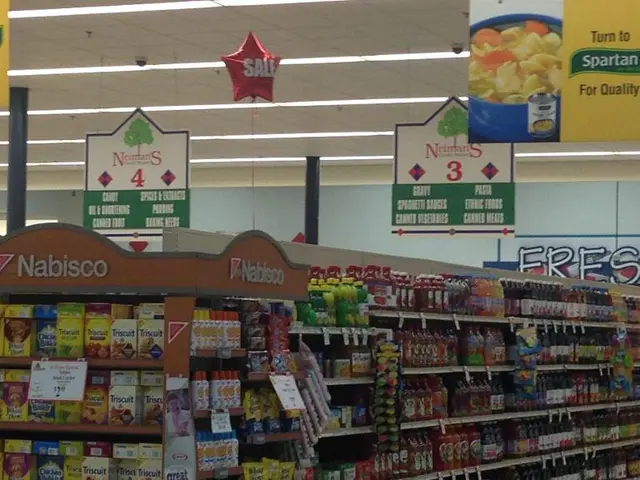Unfolding the Tales of Vegetables Named After UK Places: From Arran to Offenham
Produce Labeled After British Locations: A Curious Connection between Horticulture and Geography
Ever wondered about the captivating story behind the names of British heritage vegetables? Let's delve into the enchanting world of Vegetables Named After UK Places.
For ages, UK gardeners have been the silent architects of these unique varieties, nurturing seeds from their best crops to adapt plants to local soil, climate, and other conditions. Over time, these distinct heritage varieties took root, developing a reputation worthy of bearing the name of villages, towns, or islands, such as the Shetland Kale, Arran Pilot Potatoes, and Offenham Cabbage.
Fast forward to today, and while seed companies chose standardization over regional diversity, seed-saving revivalists are championing these one-of-a-kind strains. These passionate guardians of horticultural heritage ensure the continued existence of these unique, resilient plants - a testament to Britain's dynamic gardening history.
Why does it matter? These locally adapted seeds often thrive better, promising a bountiful harvest, and helping preserve genetic diversity. If you're keen to glimpse this legacy, start with easy savers like beans, peas, and tomatoes!
So, let's embark on a marvelous trip across the UK, unearthing some of the most interesting vegetables named after UK places:
Potatoes
Arran Pilot: This humble spud hails from the Isle of Arran, Scotland, and was fostered at the Scottish Plant Breeding Station in the 1930s.
Arran Victory: Another Arran treasure, this potato was first seen in 1918.
Edzell Blue: This traditional Scottish variety can be traced back to the 1930s.
Highland Burgundy Red: This ruby-red beauty is carefully preserved by the Highland Seed Savers group.
Jersey Royal: This iconic potato variety was first commercially grown in the 1880s on the island of Jersey, Channel Islands.
Pentland Crown: A product of the Scottish Plant Breeding Station, this potato was developed in the 1960s.
Shetland Black: This heritage variety has been a part of Shetland gardens since the 1920s.
Yorkshire Red: This traditional red-skinned variety is a staple across Yorkshire, England.
Peas & Beans
Lincolnshire Shelling Pea: Tall and traditional, this pea variety calls Lincolnshire, England, its home.
Lancashire Lad Pea: From the early 1900s, this tall pea variety was common in Lancashire.
Lord Leicester peas, Feltham First, Kelvedon Wonder, Martock Broads: Considered as four distinct, beloved pea varieties from their respective counties.
Brassicas & Root Vegetables
Ayrshire Early Turnip: This fast-growing Scottish variety hails from Ayrshire.
Bedford Filbasket Sprouts: These sprouts hold a long history in the county of Bedford.
Cheltenham Beet: This 19th-century long-rooted beetroot can be traced back to the town of Cheltenham, England.
Chelsea Red Turnip: This 18th-century market variety was a regular site in the town of Chelsea, London.
Cornish Kale: A hardy variety, traditionally grown across the county of Cornwall, England.
Early York Cabbage: An early spring cabbage with roots in Yorkshire, England, pre-dating 1850.
Manchester Carrots, Manchester Turnip: These vegetables have history in the city of Manchester, England, with the turnip dating back to the 19th century.
Taunton Dean Kale: West Country winter kale can be traced back to the town of Taunton, Somerset, England.
Offenham Cabbage: This village spring cabbage makes its home in Offenham, Worcestershire.
Norfolk Giant Parsnip: This long-rooted variety traces its roots back to the county of Norfolk, England.
Norfolk Green Top Turnips: Another Norfolk gem, this turnip variety is known for its bright green tops.
Shetland Kale: This hardy, wind-resistant kale was traditionally grown by Shetland crofters.
Sutherland Kale: A rare and old kale variety from the county of Sutherland, Scotland.
Wroxton Sprouts: These sprouts are associated with the village of Wroxton, Oxfordshire, England.
Onions & Other Alliums
Bedfordshire Champion Onion: Pre-dating 1900, this onion variety was showcased at exhibitions.
Kelvedon King Leeks: These leak varieties are well-known in the county of Essex, England.
Welsh Onion: Cultivated since the 17th century, this perennial bunching onion is a Wales native.
Other Vegetables
Dorset Naga Chilli: The spicy Dorset Naga Chilli was developed in Dorset, England during the early 2000s.
What have I missed? Tell me in the comments.
Tag: Vegetables Named After UK Places
Piqued your interest? Start exploring these unique vegetables and help keep Britain's gardening heritage alive! And who knows? You might unearth some rare gems of your own! 🌱🌽🥘🥦🌍🥕🌿🌱
On a global scale, there are also vegetables named after international place names, such as the White Lisbon spring onions. For the full list, stay tuned for another enlightening article! 😉🌻🍃🌱🥕🌍🌼🌱🌱🌱🌱🌱🌱
Transform your home-and-garden into a vibrant haven by cultivating some unique heritage vegetables named after UK places. Add a touch of historical flair to your lifestyle with Arran Pilot potatoes, Offenham Cabbage, or Cornish Kale. As seed-saving revivalists continue their mission, these one-of-a-kind strains will not only breathe life into your garden but also preserve the rich horticultural heritage of the UK.








